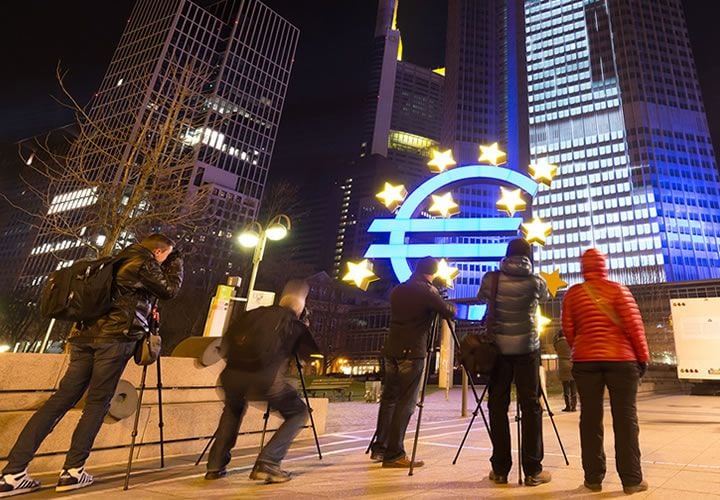Latest Eurozone Data Gives ECB Plenty of 'Jawbone' Fodder
- Written by: James Skinner

A poor showing from the Eurozone services sector and falling retail sales drove the Euro lower in London trade and could give the ECB the ammunition it needs to put a lid on a fast-appreciating currency.
Latest Eurozone data covering the month of August gives the European Central Bank plenty of fodder with which it can talk the Euro lower at its policy event on Thursday.
Yet, it does little to alter the broader narrative of a firming economic recovery and evolving monetary policy on the continent.
Therefore, the risks to the Euro are lower in the short-term, but the rally higher remains largely intact over longer-term timeframes.
Key surveys of services industries across the common currency area disappointed the market quite broadly Tuesday while growth in Eurozone retail sales was also shown easing faster than expected for the month of July.
The morning’s data contributed to a continued weakening of the Euro, which comes in the context of a deeper correction ahead of Thursday’s ECB meeting, with the common currency posting losses against the entire G10 basket during the morning session in London.
“We look at the different scenarios in our ECB crib sheet, but suspect the ECB will struggle to generate a lasting correction in the buoyant EUR,” says Chris Turner, head of foreign exchange strategy at ING Group.
The Euro's rally is problematic for the ECB in that it dampens inflationary pressures within the Eurozone. A stronger Euro lowers the cost of imports which in turn places downward pressures on prices.
The ECB has slashed interest rates and printed gargantuan sums of money in order to try and push inflation towards its 2.0% target.
The stronger Euro also makes Eurozone goods and services more expensive on the global stage and therefore dampens demand for exports; thereby knocking some wind out of economic growth.
Markets are paring exposure towards the single-currency incase the ECB takes a robust stance on the recent rally.
“We do not expect policy changes in the ECB meeting this week. The future of QE will have to wait for the October meeting. However, the ECB has to revise inflation projections down, blaming the strong Euro, and to acknowledge further downside risks,” says Gilles Moec, a European economist, and his team at Bank of America Merrill Lynch.
Tuesday’s data points, alongside downgraded inflation forecasts, could give Mario Draghi and his fellow policy makers plenty of cover for firing a warning shot across the bows of speculators or for deferring further comment on a likely exit from its bond buying program until the October meeting.
But they do little to change the broader narrative of a firming economic recovery that will eventually necessitate the normalisation of European monetary policy.
“The solid PMI readings for July and August set the scene for another strong GDP number for the third quarter, with the surveys running at a level historically consistent with 0.6% growth,” says Chris Williamson, chief business economist at IHS Markit, when commenting on the morning’s Eurozone PMI data. “With such robust growth being sustained into August, the region is on course to see GDP rise by 2.1% in 2017, which would represent the best performance since 2007.
The Euro to Pound exchange rate fell 0.11% to 0.9190, reducing its year-to-date gain to a little more than 8%, which is noteworthy in the context of poorer than expected numbers emerging from the UK’s own key services industry Tuesday.
This is while the Euro to US Dollar exchange rate fell around 0.07% to 1.1884, paring its 2017 gain back to just more than 13%.
Japan’s Yen and the Switzerland’s Franc both advanced on the Euro, adding 0.45% and 0.01% respectively, while the commodity currencies also staged an impressive advance.
Get up to 5% more foreign exchange by using a specialist provider by getting closer to the real market rate and avoid the gaping spreads charged by your bank for international payments. Learn more here.




